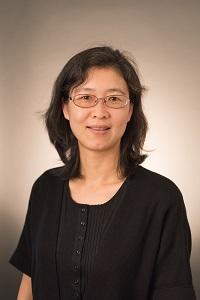
Ying Liang, MD, PhD
About
Faculty Rank
- Assistant Professor
Research
Research Focus
- Identifying molecular mechanisms that regulate self-renewal and differentiation of hematopoietic stem cells in normal, aging and cancerous condition.
- Studying the effects of aging on hematopoietic stem cells and their niche.
Research:
- Role of latexin in hematopoietic stem cell regulation in aging and cancer Hematopoietic stem cells (HSCs) produce all types of mature blood cells for the lifetime through self-renewal and multi-lineage differentiation. Accumulation of cellular damage accompanied by advancing age may account for the functional decline and malignant transformation of HSCs. We have previously identified latexin gene as a novel regulator of HSCs by acting as a “brake” to control HSC population size. Loss of this control may lead to abnormal HSC expansion which increases the risk of genomic instability and tumorigenesis. Furthermore, latexin may be associated with the functional and numerical alterations in HSC aging. We are currently using genetically engineered mice lacking latexin specifically in hematopoietic cells as a model to understand the role of latexin in HSC aging and malignant transformation.
- Role of aging in HSC niche Majority of adult HSCs reside in bone marrow microenvironment (niche). The interaction between HSCs and “niche” is important not only for the maintenance of stem cells but also for the trafficking of stem cell between peripheral circulation and bone marrow. Loss of “niche” connection could lead to uncontrolled proliferation of stem cells and possible tumorigenesis. We have shown that both donor and recipients’ age impaired HSC homing to their “niche”. We have identified the molecular signatures for HSC and niche aging. We are currently exploring the function of candidate aging molecules in regulating HSC homing and mobilization.
- Epigenome and transcriptome in HSC aging and longevity Stem cells, as they persist replenishing functional mature cells throughout life, undergo aging process. The functional decline of stem cells with age in diverse tissues results in decreased repair capacity and increased incidence of degenerative disease in aging tissues, thus contributing to age-related morbidity and mortality. We previously found that the genomic loci responsible for these age-related HSC changes are same as those linked to the difference in their lifespan, suggesting that the same gene(s) may regulate stem cell aging and organismal longevity. The development of high-throughput sequencing technologies enables a more accurate and comprehensive profiling of mRNA expression (transcriptome) and DNA methylation (methylome) inside a cell. But very little is known about the dynamic changes of these molecular signatures with aging, and even less is known about how they contribute to the organismal longevity. We thus aim to unravel the age-related changes in the transcriptome and epigenome of HSCs and understand how these changes contribute to stem cell aging and organismal longevity.
Programs
Molecular and Cellular OncologyCollege & Department
Contact Information
800 Rose Street
CC408 Roach Building, University of Kentucky
Lexington, KY 40536
United States
Phone
Email
Publications
- Concise review: hematopoietic stem cell aging, life span, and transplantation.Van Zant G and Liang Y. Stem Cells Transl Med 1:651-7, 2012.
- Latexin is down-regulated in hematopoietic malignancies and restoration of expression inhibits lymphoma growth.Liu Y, Howard D, Rector K, Swiderski C, Brandon J, Schook L, Mehta J, Bryson JS, Bondada S and Liang Y. PLoS One 7:e44979, 2012.
- The quantitative trait gene latexin influences the size of the hematopoietic stem cell population in mice.Liang Y, Jansen M, Aronow B, Geiger H and Van Zant G. Nat Genet 39:178-88, 2007.
- Effects of aging on the homing and engraftment of murine hematopoietic stem and progenitor cells.Liang Y, Van Zant G and Szilvassy SJ. Blood 106:1479-87, 2005.
